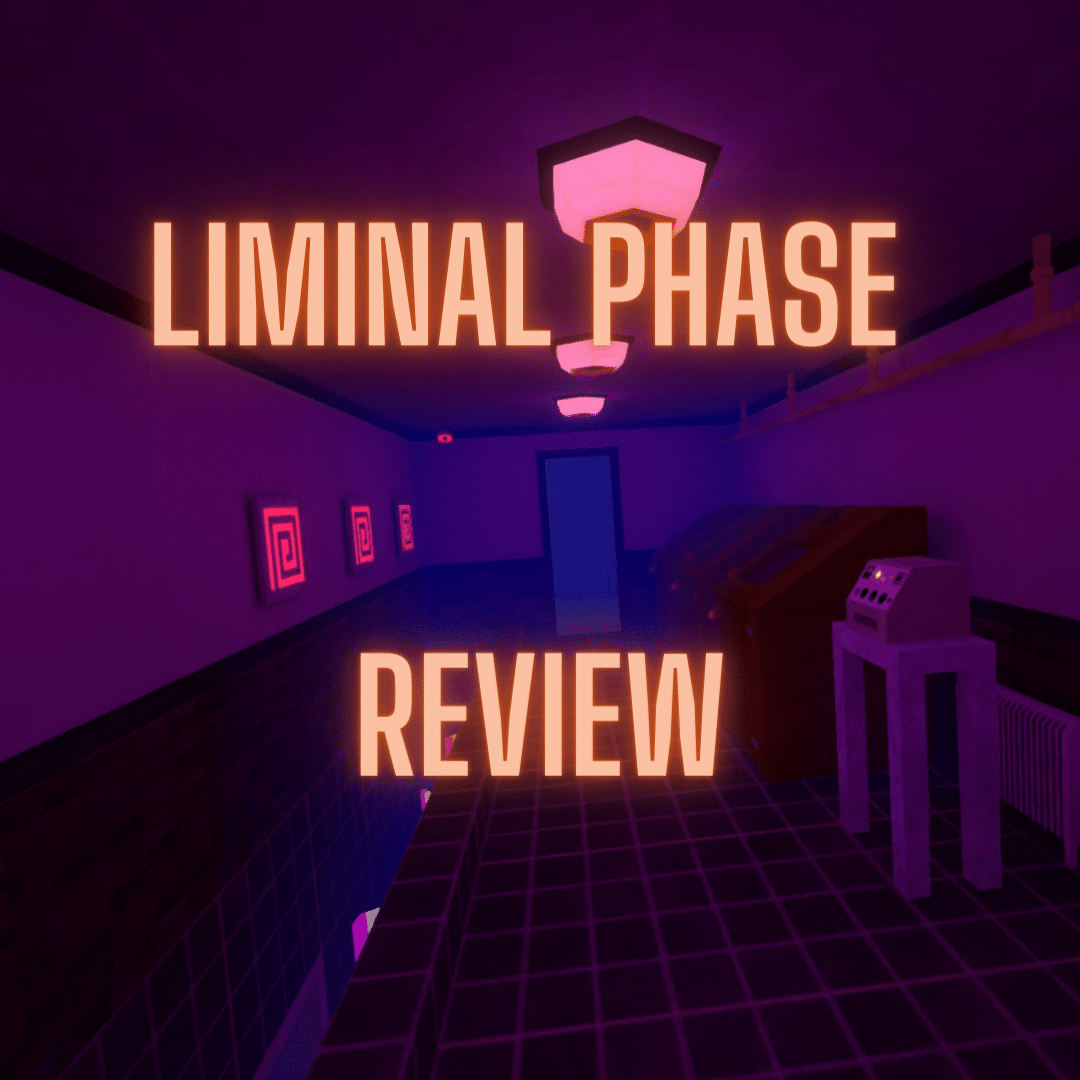Liminal Phase is the latest release from indie developers Anananas Studio.
In this VR action-horror game you play as Frank, a lonely man whose life is consumed by video games.

With his mental health already on the edge, he one day finds a floppy disk for a game called Sanctum 3-D. As he slides it into his PC, the lines between reality and video games become blurred. There, Frank must face Sanctum 3-D’s strange constructs as well as those of his own mind.
This will see you weaving in and out of digital dreamscapes that feel like a combination of half-remembered Windows 95 screen savers and late-night fever dreams. These areas are a joy to explore, full of bright colors, hard lines, and retro-cyber coolness. While exploring, you’ll combat creatures that lurk within and solve some fun, light puzzles as you go. Liminal Phase achieves what it sets out to do and creates a dream-like descent into retro madness, even if it trades depth and mechanics for atmosphere and tone.
Liminal Phase starts off with a strong premise and a great hook.
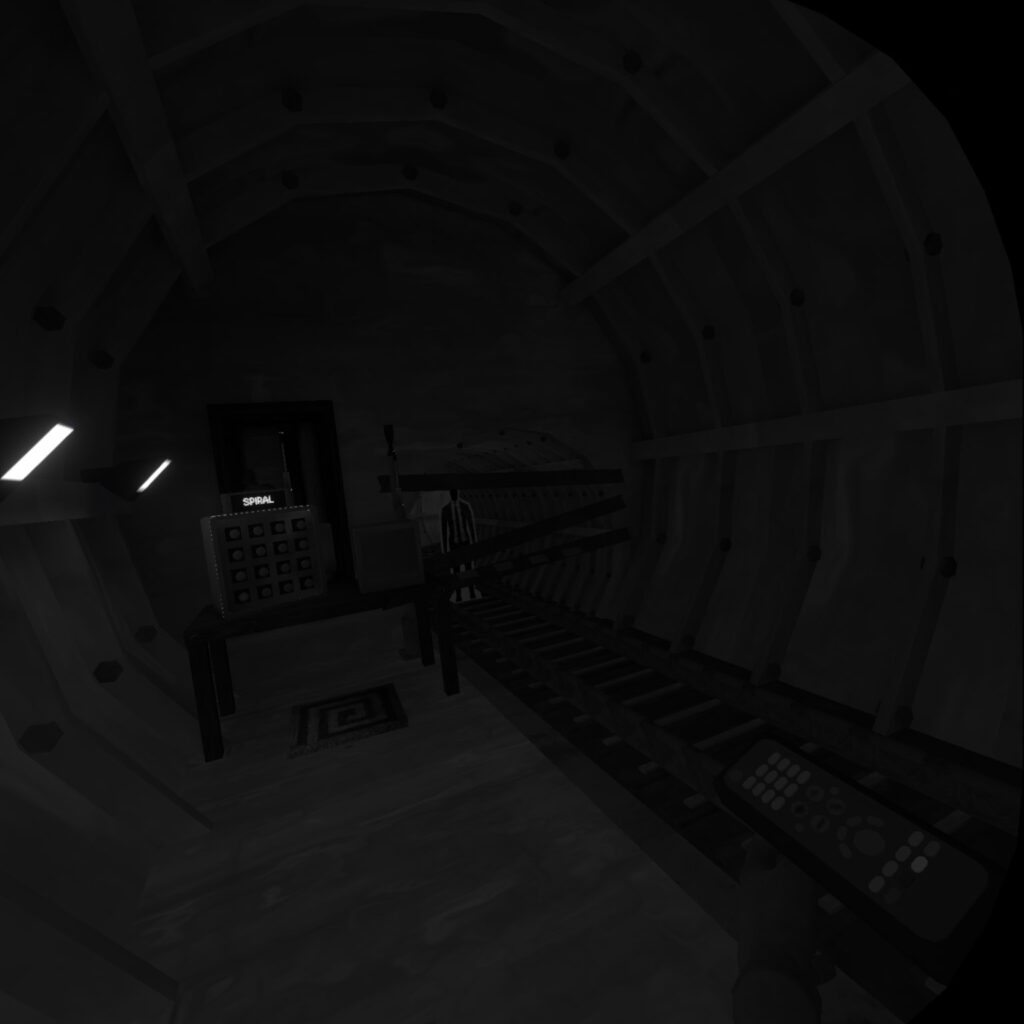
There’s no exposition and little in the way of direct storytelling here, which serves to reinforce Frank’s isolation. You start the game unceremoniously in his small apartment, giving you time to take in the nice touches of environmental storytelling littered about the place.
The two features that strike out are the computer desk, littered with big-box CD-ROM games, and a console and TV setup in the opposite corner. The environment is littered with interactables and creates a claustrophobic, ugly picture of our character.
Speaking of Frank, the only décor that lines the walls are ostensibly self-portraits. Always facing away, Frank is dressed down in a sickly dark green. Featureless and bald, he’s in a perpetual exit, passing through a door or peering down a hall. These paintings are eerie, ominous, and oddly hostile. It’s like if Phil Hale painted portraits of Judge Holden. Great, great stuff
After exploring Frank’s apartment you’ll soon find and slide in a copy of the mysterious game, Sanctum 3-D. This is where the bulk of Liminal Phase will take place.
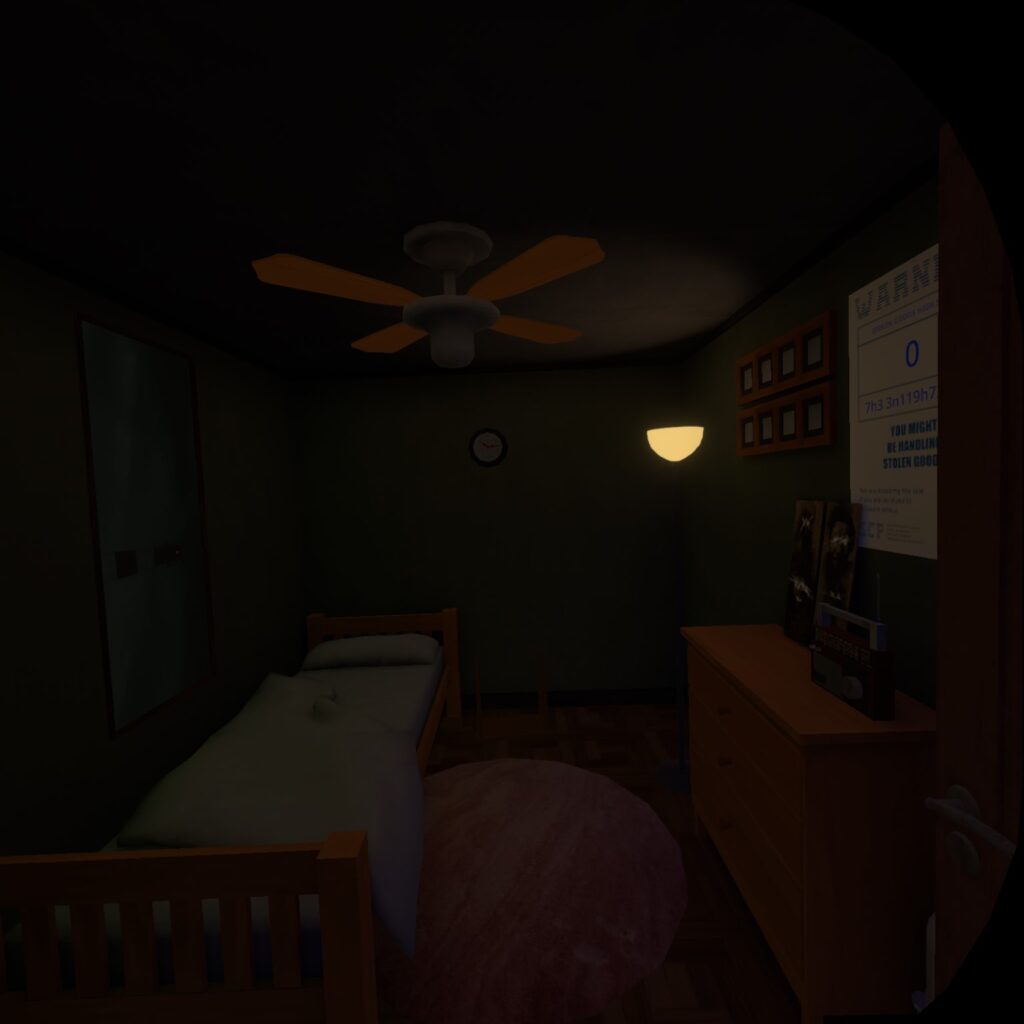
This dreamy cyberspace is at times both nostalgic and foreboding. At first, the sharp blue walls might evoke the boot-up screen of a Commodore 64, other times, the hard crash of a failed executable. It’s recognizable enough that you alternate between familiar but oddly unplaceable memories, and uneasy tension as you explore the twisting corridors and digital dreamscapes.
It speaks to the title of the game, Liminal Phase. Everything here feels transitory, like a place in flux. One that you think you’ve seen before, some nostalgic memory of a bygone era that should be comforting and warm, but it’s twisted enough to feel hostile and disquieting. Liminal Phase targets the phenomenon that is liminal spaces and it hits that mark. Only here, we’re dealing in consoles and video games, and not classrooms and suburbs.
Once inside the digital otherworld, you’re tasked with fighting creatures and solving puzzles.
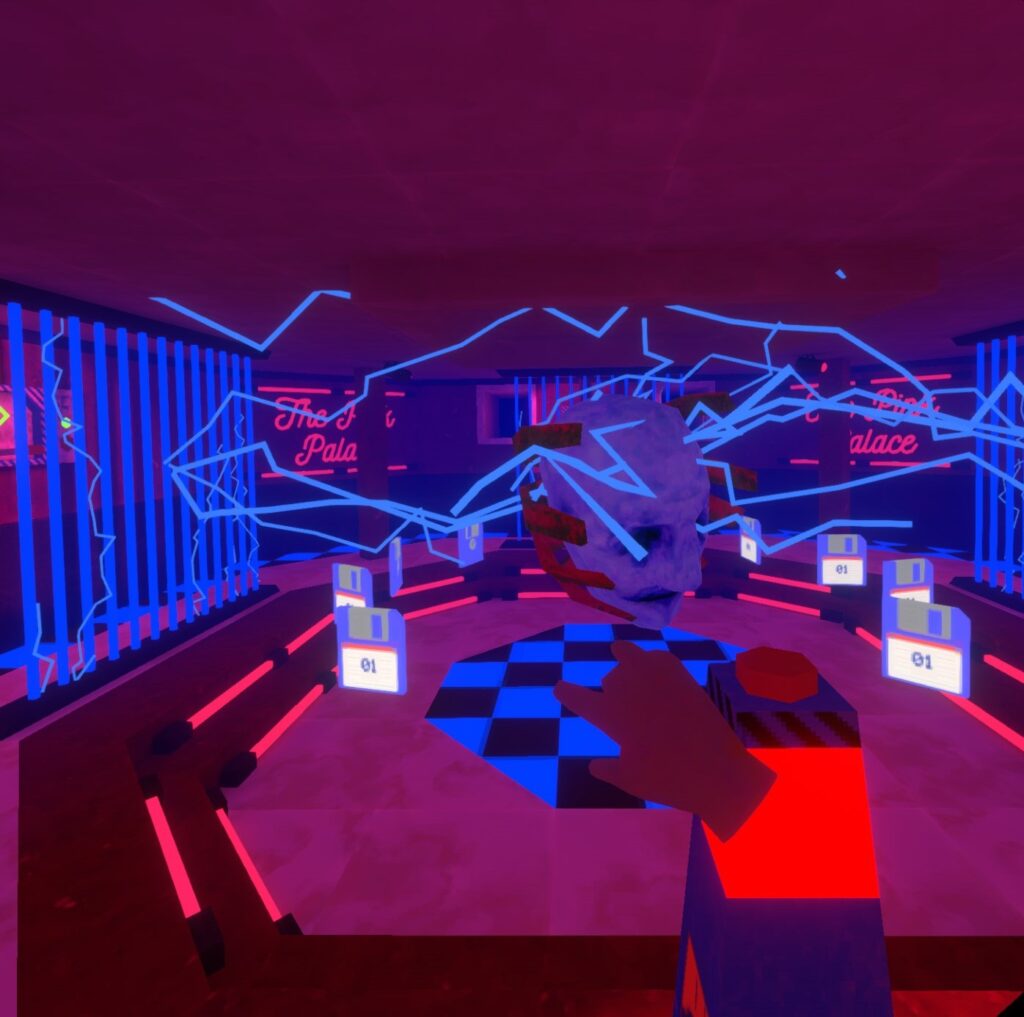
You’re not outfitted with any traditional weapons in Liminal Phase. Instead, you’re introduced to a nice little machine that severs your fingers and transforms the bloody stump into a weapon that can fire spurts of blood. It’s something so hilariously macabre that you’d think it came from Cruelty Squad. You encounter more of these stations as you play, removing more fingers and improving your uhh, firepower.
Blood(ammo) is in no short supply so you can fire away without worry of running out. The enemies that you find lurking around don’t vary much, with most being floating eyes that take one spurt of blood to kill, and larger, disembodied heads that take a few more. Even later on you’ll encounter some fun sprite-creaturese that all take one shot to kill. While the enemies are not particularly challenging or complex, I found for the length of Liminal Phase, there was enough variation that it kept the experience fresh if unchallenging.
Liminal Phase is not action-packed, so these encounters serve more to reinforce the surreal tone and keep you moving as you explore, as opposed to being combat highlights. There are a couple of boss encounters that require continuous movement as you dodge projectiles and throw levers, or pace around a big room as enemies flood in, which break up the gameplay and offer nice challenges to raise the heart rate a little.
Breaking up the combat, you’ll encounter Frank’s Challenge puzzles.
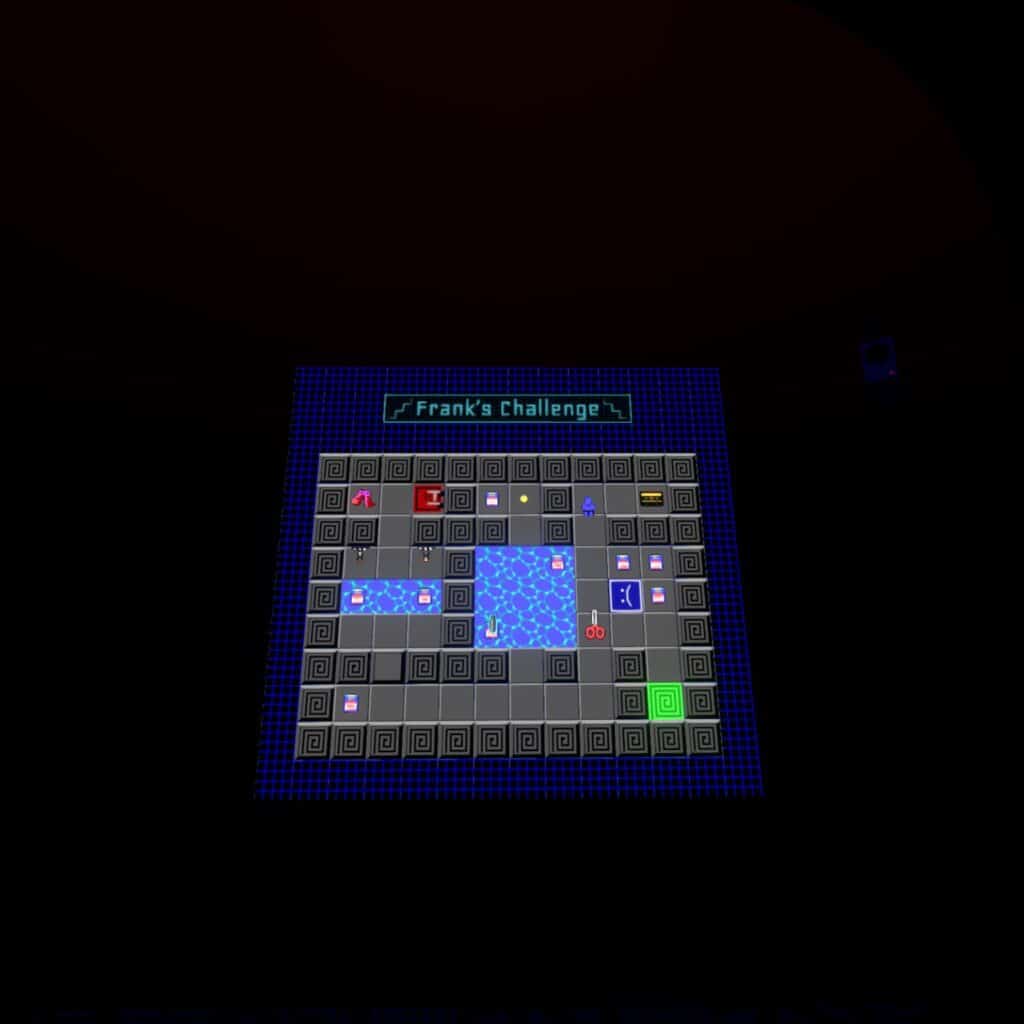
Setup as an odd arcade cabinet, Frank’s Challenges are puzzles in the form of an 8-bit minigame, something like Pacman or Dig Dug. Your goal is to clear the level by navigating a sprite around obstacles and enemies, collecting tools, and flipping switches to get to the end of the stage.
These challenges increase in difficulty as they appear throughout the game, and usually serve to get a key item to progress. they’re pretty fun! They serve as a nice breather from the tense atmosphere of the digital world and allow for a moment of straightforward, familiar puzzling as you go through the game.
On a meta-level, it’s pretty great too. Frank, already losing his touch with reality, still manages to disassociate further by zoning out in front of an arcade cabinet…while already zoning out into a virtual world. It’s a nice touch.
In this weird, dreamy cyberspace, you’re pursued by a tall shadow; an impression of a person that seems to be overseeing your journey.

Always at your back, or hidden around a corner, the shadow will watch as you explore, solve puzzles and fight enemies. The shadow figure is representative of how static Liminal Phase can feel. There isn’t a lot of animation or moving parts within the game, and zero jump scares.
Had most of the playtime taken place in Frank’s apartment or in the real world in general, this would have been a bad thing. But as you spend most of your time in this dreamy game world, the stillness felt uncomfortable and eerie. There are many moments of silence in Liminal Phase, with little to no ambient noise to accompany your exploration. The music that does play is low sweeping synths and droning hums like a resting CRT TV. Enhanced by the inherent immersion of VR, it culminates in a rigid, unwelcoming environment that serves the themes of the game perfectly.
It’s not exactly scary much of the time, but unsettling, and uncomfortable. Occasionally you’re sent back into the real world to explore Frank’s apartment. This is where I felt the most tension.
Home-invasion horror is some of the scariest stuff out there. Take a place that should normally feel safe and secure, and rip those feelings away from you. I dreaded being kicked back to Frank’s house, as I knew something must have changed while I was in the video game sphere.
Every time you return there’s a little more of the apartment to explore, and you’ll find the place more disheveled than before. It helps his apartment feel cramped and dark compared to the digital world, and they contrast nicely. You tentatively explore what’s changed, gleaming a little more about Frank’s life and mental state as you do. It’s great, and it breaks up the gameplay just enough to keep the pace fresh.
Performance was never an issue, which only aided in the immersion.
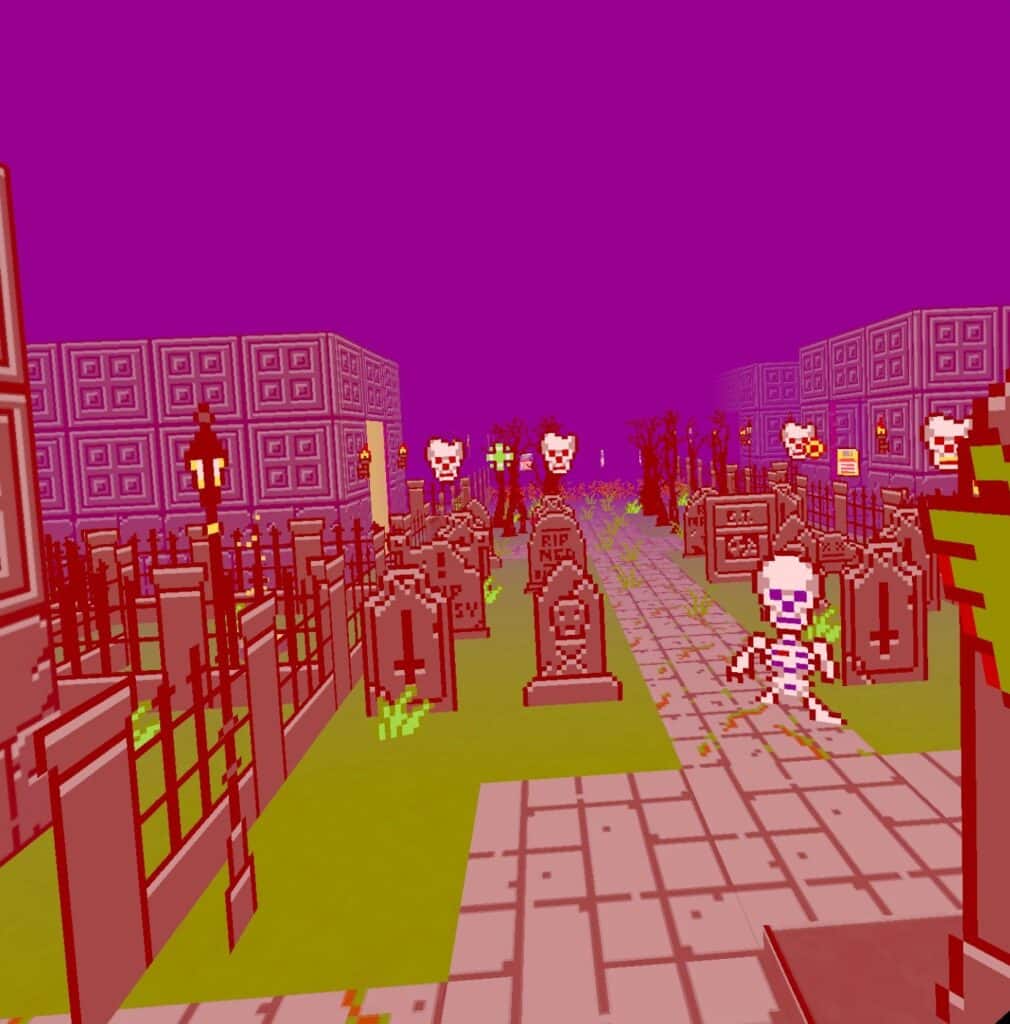
I played Liminal Phase on the Occulous Quest 2 via Steam Link, and I encountered no issues. The low-poly styling allowed it to run at a buttery FPS, and I never encountered collision bugs, lost items, tracking issues, or physics issues that often come with VR titles.
Progress was saved regularly and checkpoints were generous. The only source of some disorientation was the ladder climbing, which seemed to pull your body location back and forth with each grab of the bars.
Liminal Phase ran very well during my testing.
There is a lot to like about Liminal Phase
It’s a dreamy, foreboding game, full of nostalgia and familiarity, but also change and uncertainty. It’s about Frank, who is forced to face discomfort in the video games he used to dissolve into for safety, and it’s about exploring what happens when you blur the lines of reality.
I think that’s represented very well, styled in chunky 80’s low-poly graphics. It’s a look many of us can remember fondly, and it’s immersive and eerie to see it turned into something hostile.
Liminal Phase is, for the most part, a smooth ride. You won’t encounter anything too challenging or horrific, with the puzzles and enemy encounters never pushing the limits of your VR problem-solving skills or reflexes. As such, you might find the pace to be a little slow.
But if you’re looking for something that will sink into you as Frank sinks into his games, where tone and atmosphere are more important than pure scares or involved gameplay, then Liminal Phase is worth checking out.
You can buy Liminal Phase on Steam, on Vive Port, and App Lab
